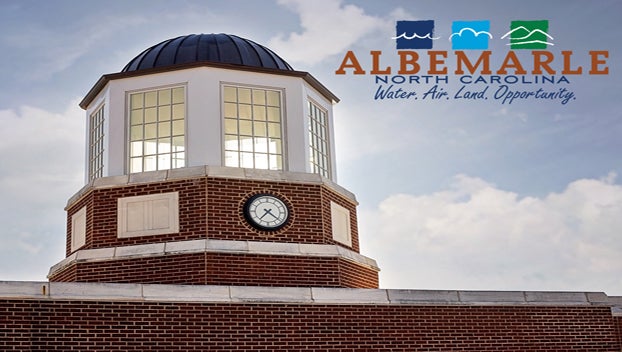Albemarle Police presents traffic enforcement update, concerns to council
Published 3:01 pm Tuesday, April 19, 2022
|
Getting your Trinity Audio player ready...
|
The Albemarle City Council on Monday night received a presentation from the Albemarle Police Department regarding traffic concerns, especially motor vehicle collisions and speeding issues.
Police Chief Jason Bollhorst, Assistant Chief J.T. Cranford and Captain Josh Laws began the presentation by explaining that during the first quarter of the year, specifically from Jan. 1 through March 22, the department responded to 231 car crashes within the city. This comes out to an average of about three crashes per day.
“That is pretty significant,” Bollhorst said about the daily average.
For additional context, over the past two years, APD has responded to more than 950 collisions within city limits.
The highest concentration of these accidents have consistently originated at N.C. Highway 24-27 Bypass, U.S. Highway 52, Main Street and the Northeast Connector.
So far this year, APD has conducted 773 traffic stops and officers have issued 627 written citations to drivers for breaking motor vehicle laws. Some of the most serious charges from the citations issued include having no operator license (157), driving while license is revoked (103) and speeding (37).
“In a first quarter period, that’s a significant amount of charges,” said Laws. “We’re trying to stop people from speeding and breaking the law.”
When it comes to the issue of speeding, there have been five areas that have been reported to the department as being dangerous. These are Anderson Road and Woodhurst Lane, Snuggs Road and Snuggs Park Road, Salisbury Road and Spruce Street, Salisbury Road and Snuggs Street, and Anderson Grove Church Road and Sunview Drive.
To try and limit incidents of vehicles speeding, police routinely set up mobile data measuring trailers in certain areas, which can alert drivers to how fast they’re driving. The data is recorded and reviewed by officers on a weekly basis.
“It’s very hard to sit there in a marked police car…because they’re really small streets and they’re going to see you and have the chance to speed up,” Laws said.
Some of the strategies discussed within the department to combat problems related to speeding have included:
- creating a traffic enforcement team utilizing unmarked vehicles/motorcycles;
- working with the Governor’s Highway Safety Program on a traffic grant;
- placing permanent speed measuring signs on poles and speed humps in neighborhoods experiencing continual speed complaints;
- increasing license checks during periods of warm weather;
- purchasing an additional speed trailer;
- lowering speed limits in several neighborhoods;
- working with other city departments to develop key strategies; and
- partnering with other local and state law enforcement agencies for traffic task force operations
According to data from 2020 and 2021, it appears that many of the traffic concerns are originating from a few streets in the South Albemarle area.
Of the 65 accidents reported to the police over the past two years, 14 came from South Bell Avenue, followed by Dr. Martin Luther King Jr. Drive with 13, Summit Avenue with 12 and Arey Avenue with 10.
Officers also conducted close to 500 traffic stops during the two years, of which the same streets featured prominently. A total of 126 stops were conducted along Dr. Martin Luther King Jr. Drive while 86 were conducted at both Summit Avenue and Arey Avenue.
“These numbers are somewhat amazing,” Councilman Dexter Townsend said. “I had no idea it was to this volume.”
Though the data presented was just specific to APD, many council members mentioned seeing an increase in sheriff deputies making traffic stops within city limits over the past few years.
“Our goal is to have a direct impact on any concerns related to traffic in Albemarle,” Bollhorst said.
He added that it appears most of the speeding problems seem to be originating from individuals entering the city.
“We’re going to leverage technology and other resources as we move forward to focus back on the patrol efforts, specifically for traffic and other crime factors,” he said.








